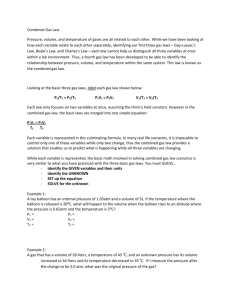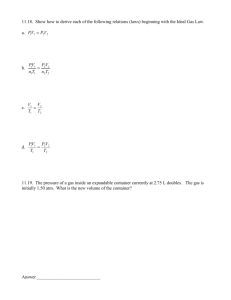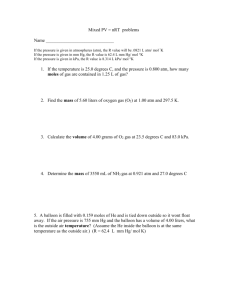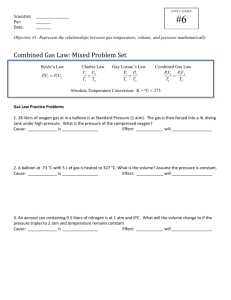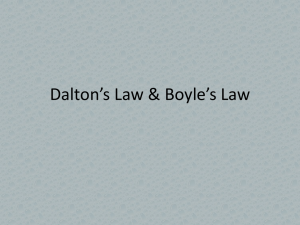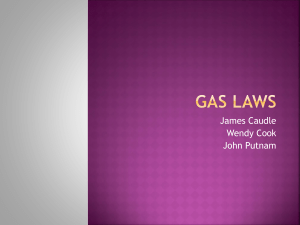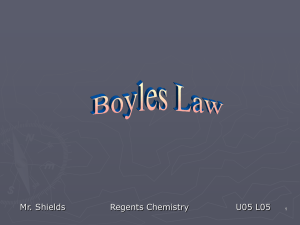Boyles Law Practice Problems
advertisement
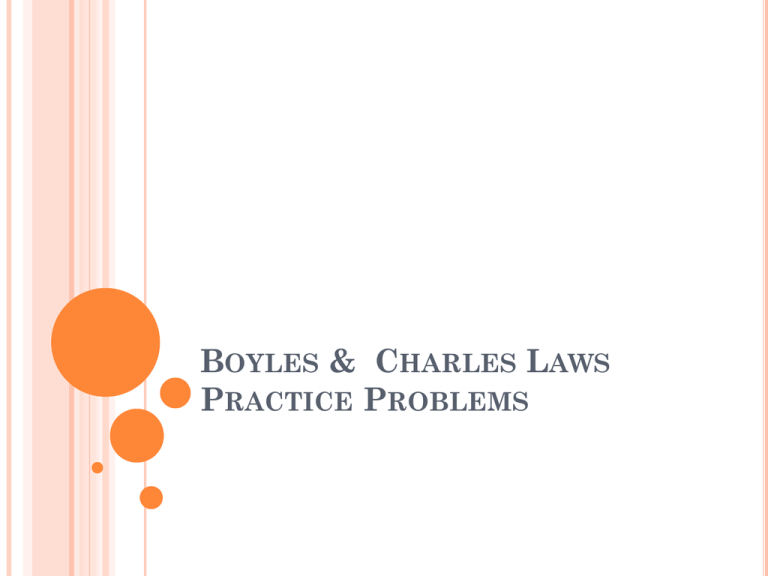
BOYLES & CHARLES LAWS PRACTICE PROBLEMS P1V1=P2V2 #1 If I have 7.1 liters of gas in a piston at a pressure of 1.5 atm and compress the gas until its volume is 2.8 L, what will the new pressure inside the piston be? P1V1=P2V2 #2 I have added 15 L of air to a balloon at sea level (1.0 atm). If I take the balloon with me to Denver, where the air pressure is 0.85 atm, what will the new volume of the balloon be? #2 SOLUTION P1V1 = P2V2 (1.0 atm)(15 L) = (0.85 atm)(x) x = 18 L P1V1=P2V2 #3 I’ve got a car with an internal volume of 12,000 L. If I drive my car into the river and it implodes, what will be the volume of the gas when the pressure goes from 1.0 atm to 1.4 atm? #3 SOLUTION P1V1 = P2V2 (1.0 atm)(12,000 L) = (1.4 atm)(x) x = 8600 L Or 8.6 x 10ᶺ3 CHARLES LAW: V1/T1 = V2/T2 #1 If I have 45 liters of helium in a balloon at 250 C and increase the temperature of the balloon to 550 C, what will the new volume of the balloon be? #1 SOLUTION 45 L x 298 K 328 K x 50 L #2 V1/T1 = V2/T2 Calcium carbonate decomposes at 12000 C to form carbon dioxide and calcium oxide. If 25 liters of carbon dioxide are collected at 12000 C, what will the volume of this gas be after it cools to 250 C? #2 SOLUTION 25 L x 1473K 298 K x 5.1L #3 CHARLES LAW I have 130 liters of gas in a piston at a temperature of 2500 C. If I cool the gas until the volume decreases to 85 liters, what will temperature of the gas be? #3 SOLUTION 130 L 85 L 523K x x 340 K x 69 C 0
